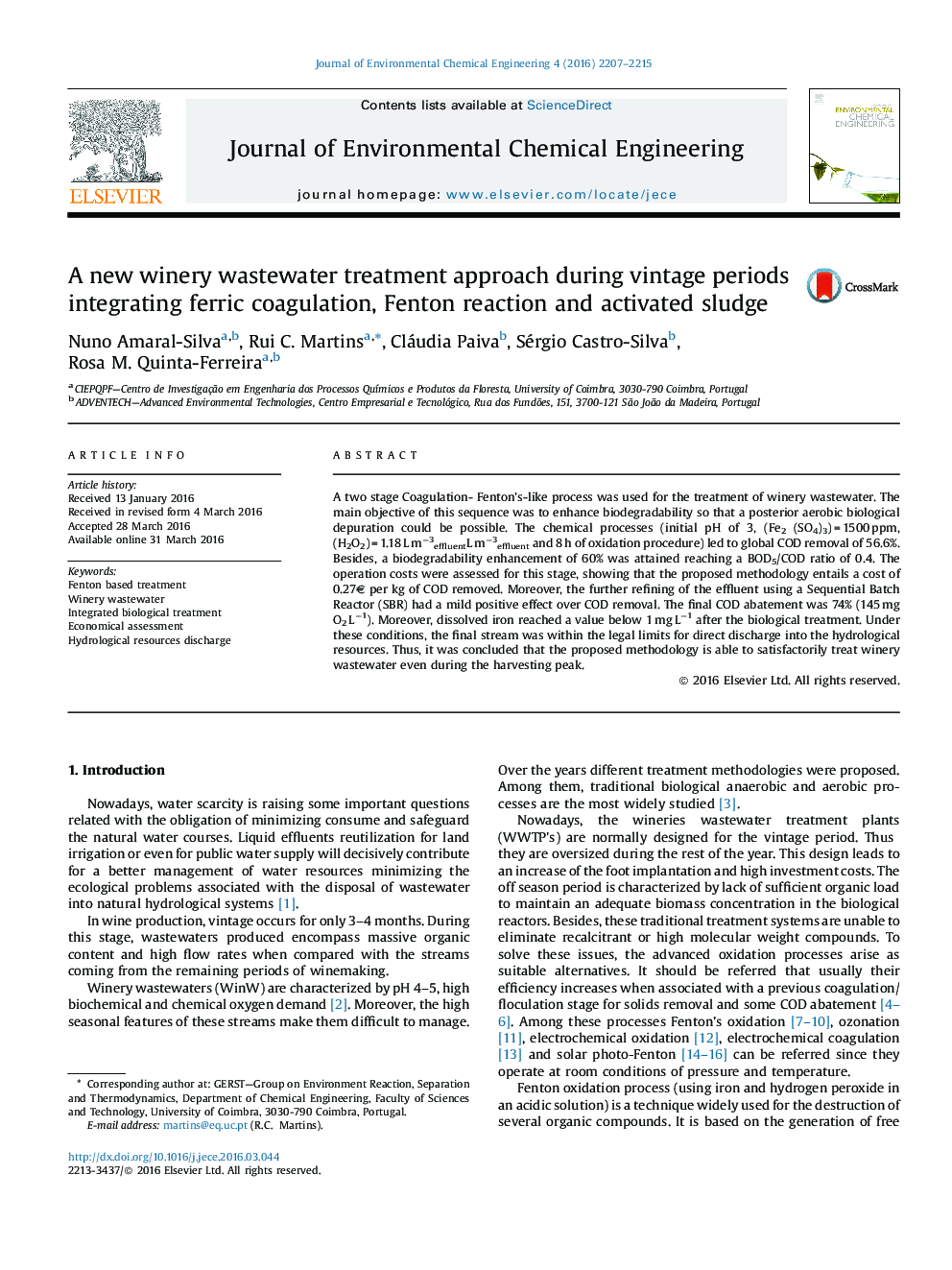| Article ID | Journal | Published Year | Pages | File Type |
|---|---|---|---|---|
| 221705 | Journal of Environmental Chemical Engineering | 2016 | 9 Pages |
•Coagulation-Fenton’s process was optimized for winery wastewater treatment.•Coagulation was able to provide the necessary catalyst for the oxidation step.•Chemical stages improved the effluent biodegradability.•Final treated water within the legal limits for discharge to the natural courses.
A two stage Coagulation- Fenton’s-like process was used for the treatment of winery wastewater. The main objective of this sequence was to enhance biodegradability so that a posterior aerobic biological depuration could be possible. The chemical processes (initial pH of 3, (Fe2 (SO4)3) = 1500 ppm, (H2O2) = 1.18 L m−3effluentL m−3effluent and 8 h of oxidation procedure) led to global COD removal of 56.6%. Besides, a biodegradability enhancement of 60% was attained reaching a BOD5/COD ratio of 0.4. The operation costs were assessed for this stage, showing that the proposed methodology entails a cost of 0.27€ per kg of COD removed. Moreover, the further refining of the effluent using a Sequential Batch Reactor (SBR) had a mild positive effect over COD removal. The final COD abatement was 74% (145 mg O2 L−1). Moreover, dissolved iron reached a value below 1 mg L−1 after the biological treatment. Under these conditions, the final stream was within the legal limits for direct discharge into the hydrological resources. Thus, it was concluded that the proposed methodology is able to satisfactorily treat winery wastewater even during the harvesting peak.
Graphical abstractFigure optionsDownload full-size imageDownload as PowerPoint slide
